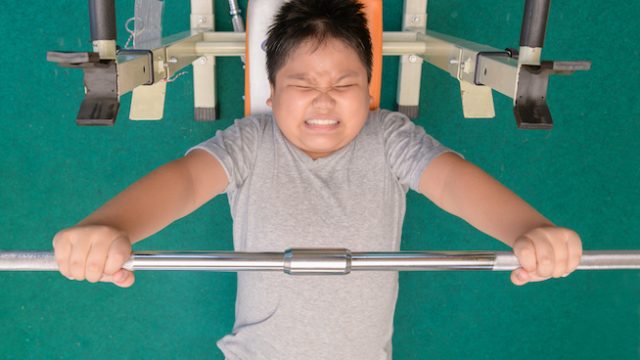Ever since I was a young kid, seemingly every adult I came into contact with told me that us youngsters needed to hold off on weight training until our minds and bodies were more mature.
They’d mumble something about how it would “stunt your growth and close your growth plates,” and for decades now, weight training has been deemed as largely unsafe and counterproductive for youth athletes who aren’t in their mid to late teens.
Fortunately, the tide is changing. Recent and past research has shown that weight training does not in fact cause our epiphyseal plates to close.
A 2017 study states that “current expert opinion in the field supports the belief that (resistance training) prior to epiphyseal closure is not inherently harmful (13). The prospective studies that have provided effective supervision and guidance have demonstrated no increased incidence of physeal injury in children weightlifting (20–24).”
This isn’t to say there’s no risk in resistance training. When executed incorrectly, you increase your risk of epiphyseal plate injury. If the damage is severe enough and there is an early physeal clause, limb length anomalies could occur as one arm or leg stops growing but the other does not. Surgery is an option in these cases. Alternatively, growth plate fractures can also stimulate additional growth in the limb, again leading to mismatched limb sizes. However, there’s a risk of these types of injuries in any sort of sports activity. Thus it’s completely unfair and ridiculous to classify weight training as riskier than other sports and sports activities.
Dr. Mel Stiff further dismisses the myth that weight training negatively impacts growth in his book Facts and Fallacies of Fitness. “It has never been shown scientifically or clinically that the periodic imposition of large forces by weight training on the growing body causes damage to the epiphysial plates,” Siff writes. Siff notes that bone density scans have found young people who compete in competitive weightlifting actually have higher bone densities than those who do not weight train, as is true in adults.
A 2009 review published in Sports Health states that “Participation in almost any type of sport or recreational activity carries a risk of injury. A well-supervised strength training program has no greater inherent risk than that of any other youth sport or activity … A well-designed strength training program following the recommended loads, sets and repetitions appropriate for the young athlete’s age and body habitus should not excessively stress growth plates. Sports such as gymnastics and baseball, which involve repetitive impact and torque, provide a greater risk of epiphyseal injury … The rare case reports of epiphyseal plate fractures related to strength training are attributed to misusing equipment, lifting inappropriate amounts of weight, using improper technique, or training without qualified adult supervision.”
When you look at the facts, smart weight training conducted under the supervision of a qualified individual is actually one of the safer and more beneficial physical activities a youngster can take on. And a little can go a long way. Research and experience indicate that this population can make gains for quite some time using moderately heavy weights in the rep range of 5‐8. This is the approach I take with all of my youngsters, and we have had zero issues.
It’s also important to remember strength training doesn’t have to include a barbell. There are thousands of ways to get stronger using bands, body weight, medicine balls and light dumbbells. If you have a child you believe is ready to start strength training, read STACK’s guide on the topic.
Photo Credit: kwanchaichaiudom/iStock
This content was originally published here.









